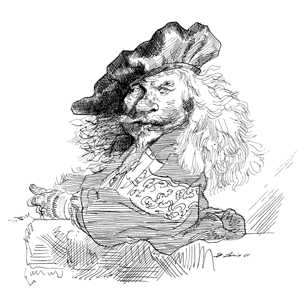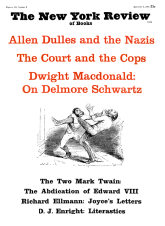In books on Rembrandt we often read that compositions are “taken from” some earlier source. When this is said of other artists the words “taken from” can be accepted literally; they refer, as they invariably do with Rubens, to the conscious transposition of motifs. But with Rembrandt their significance is rather different; they denote not a simple act of theft, but recourse, frequently unconscious, to a visual culture of great richness and unusual depth. The nature of this problem, and the piecemeal nature of the attacks that have been made upon it, are seen very clearly in Münz’s exemplary catalogue of Rembrandt’s etchings, where we read of the Hundred Guilder print that
it is not possible to go fully into the dependence of the composition on Italian art and on that of Raphael in particular; however, many details point to Rembrandt’s having known Annibale Carracci’s Miracle of St. Roch. The etching after this painting…may have been in Rembrandt’s collection of prints…. The group of pharisees on the left is not directly dependent, as had been thought, on Leonardo. Rembrandt clearly took it, in my opinion, from the background of Lucas van Leyden’s Adoration of the Kings.
At least since the publication of Valentiner’s Rembrandt und seine Umgebung, it has been recognized that the key to Rembrandt’s store cupboard of images lay in his own collection, and fortunately for the art historian, if not for the artist, an inventory was made of it at the time of Rembrandt’s bankruptcy in 1656. In it were the Dutch paintings we might expect—works by Seghers and Lievens and Brouwer and many more—but beside them were a number of paintings of Italian origin, “one rich man by Palma Vecchi,” “one large painting of the Samaritan Woman by Giorgione,” “one head by Raphael of Urbino,” and so on. More important still, among the artist’s books were volumes of engravings “full of the work of Michelangelo Buonarroti,” “with prints after Raphael of Urbino,” “very large with almost all the work of Titian.” Needless to say, account is taken of this background in every book on Rembrandt. For example, it is a commonplace that the etching of the Blind Tobit makes use of a figure from Raphael’s Blinding of Elymas, and it has been pointed out by Jakob Rosenberg, in his standard Rembrandt monograph,* that at a certain moment, relatively late in life, the influence of sixteenth-century Venetian prints and drawings is reflected in his landscapes. But what, we may ask, as these instances multiply, was the aggregate significance of derivations such as these for the development of Rembrandt’s style? This is the question answered, in the first series of Wrightsman Lectures, by Sir Kenneth Clark.
HIS BOOK IS WRITTEN from the standpoint of a student of Renaissance art, and it has the double aim first of defining the influence of Renaissance art on Rembrandt, and second of establishing its relevance to the artist’s creative processes. Whereas Rosenberg argues that “for his own ends Rembrandt employed certain characteristic features of Renaissance art, such as simplicity, breadth, and solemnity, but other features fundamental to the classical conception were unacceptable to him,” Sir Kenneth claims the opposite: “Without the rebellious, truth-loving, deep-delving energy of Rembrandt’s imagination his classicism would have become academic; without a profound study of classic art his gifts as an illustrator would have left him far short of the summit of European art.” His case broadly is that alone of Dutch artists Rembrandt raised his style to a level of ” ‘high seriousness,’ which in the art of painting seems to be reserved for those brought up in a tradition of monumental religious art,” that his attitude to the past, as it is reflected in the works he owned, differed from that of other seventeenth-century Dutch artists, and that there is a causative connection between these facts.
In his Introduction Sir Kenneth is at pains to disavow the status of a Rembrandt specialist. Reading his book, one is from time to time reminded of Pater’s essay on Giorgione, where the factual content depends from Crowe and Cavalcaselle’s antecedent History of Painting in North Italy. Just as Pater translates the heavy loam of Crowe’s description of the Giorgione Concert in the Palazzo Pitti into airborne cadences, so Sir Kenneth distills the learned literature of the Polish Rider into one memorable paragraph:
So, to Death on a horse is added this concept of a far-ranging Christian knight; and here he may have thought again of Dürer, and of the Miles Christianus in the engraving known as the Knight with Death and the Devil…But in contrast to Dürer’s heavily armoured knight, grimly resolute on his powerful horse, Rembrandt’s rider, on his thin, light-foot nag, wears an elegant joupane, and turns towards us, or rather towards the evening light, a face of almost feminine beauty. He thus creates one of those antinomies, not infrequent in Rembrandt’s later work, which reach a new level of imaginative truth.
For people who see Rembrandt’s work as Pater saw Giorgione’s, not as the outcome of a local context, but as an achievement outside time, expressing a different repertory of emotion from that of his contemporaries and reaching down to a deeper level of artistic experience, this book will take its place as the most articulate and sensitive of all introductions to Rembrandt.
Advertisement
BUT SIR KENNETH CLARK is not, in Pater’s sense, an aesthetic critic. His methods of analysis are more sophisticated—in the first lecture the categories of style depend from Wölfflin; he is more observant—while his book rightly draws on the conclusions of earlier scholars, it is punctuated by observations that are valid and original; and he is unfailingly responsive to the human impulse behind Rembrandt’s work. In lecturing there is an inbuilt temptation to present conclusions more succinctly and provocatively than is usual in written work, and the present book from time to time lays itself open to objection on this count. To specialists the reappraisal of certain drawings, the redating of the Munich Resurrection, and the rejection of the Dresden Sacrifice of Manoah are likely to seem overconfident. Yet even if Sir Kenneth were wrong on all these points (to a fellow non-specialist it seems that his judgments on the drawings are almost invariably correct), the value of the lectures would not be seriously impaired. In the first lecture Rembrandt’s conversion from the aggressively anticlassical idiom of the 1620s and ’30s to the classical synthesis of the etching of Christ Before Pilate of 1655 is explained in terms of the progressive absorption of High Renaissance art. The second lecture deals in greater detail with Rembrandt’s debt to Marcantonio and through Marcantonio to Raphael, and with the stages whereby the earliest drawing from an engraving after Leonardo’s Last Supper grew progressively into the painting of Samson’s Wedding Feast at Dresden, the etching of Christ Healing the Sick, and the Supper at Emmaus in the Louvre. This is elaborated in the third lecture, “Rembrandt and the Monumental Tradition,” which discusses the compositional principles of the Night Watch, the Claudius Civilis and the later Anatomy Lesson. Whereas for Rosenberg the Night Watch “stems from truly Baroque impulses…brushing aside all remnants of the more static order which the Renaissance had continued to impose upon his forerunners,” for Sir Kenneth Clark it was, in its complete form, “the type of composition which was brought to perfection by Raphael in the Vatican” and appears Baroque only because it is “garnished by Rembrandt’s rich accoutrements and dramatic lighting.” The two views are not mutually exclusive—Italian Baroque painters like Lanfranco likewise develop Raphael’s principles of composition in a Baroque sense—but the new analysis certainly contains the higher degree of truth.
THE THEME of the fourth lecture is Rembrandt and Venice. The main connection here is technical; without long and assiduous study of the technique of Titian, Rembrandt could scarcely have arrived at the expressive repertory of his later works. But Sir Kenneth is concerned with style not with technique, and this section contains some beautiful pages on the Saskia as Flora in London and the Saskia with a Flower in Dresden, which have a common source in a painting Rembrandt knew in the original, the Flora of Titian. Not only the Flora but the lost Venetian High Renaissance paintings from the Vendramin collection were to be seen in Amsterdam, and the crude drawings which are all that survive of the latter group of pictures yield convincing prototypes for the Hendrikje Stoffels at a Window in Berlin and the Minerva in the Gulbenkian Foundation. To the multitude of sources that have been cited for the imagery of the Jewish Bride, he adds, probably correctly, a Giorgionesque painting of the type of the Lovers at Dresden. Rembrandt he writes,
not only equals Giorgione in his power of spiritualizing matter, but adds a new dimension of human understanding…These are two individual souls, who none the less embody certain universal and enduring truths; that we need each other, that we can achieve unity only through tenderness, and that the protection of one human being by another is a solemn responsibility.
One of the most tantalizing entries in the inventory of the Rembrandt sale relates to “the precious book of Andrea Mantegna.” Rembrandt’s interest in Mantegna is attested, late in life, in copies of the Calumny of Apelles and the engraving of the Entombment. We know, moreover, that members of his studio were familiar with lost drawings by Carpaccio and Gentile Bellini. If these were also included in the “precious book,” it can be contended that Rembrandt’s debt to Italy extended to the quattrocento. This is the subject of the fifth and last of the lectures, in which Sir Kenneth explains the handling of certain drawings of the mid-1650s as a response to Carpaccio’s drawing technique. The suggestion sounds, at a first hearing, so improbable that one recoils before it, but it has already been noted by Otto Benesch (Rembrandt as a Draughtsman, 1960) that Rembrandt’s study of Mantegna’s engravings and Indian miniatures was reflected in his penmanship, and the more carefully the evidence is scrutinized, the more persuasive the new thesis seems.
Advertisement
One of the merits of this book is that Sir Kenneth Clark does not restrict himself to what is provable. Some of his claims are speculative and are likely to remain so. But they proceed from a consistent, convincing vision of Rembrandt’s creative machinery. It sometimes happens that great artists have more in common with great artists of other periods than with their own contemporaries, and Sir Kenneth, in restating this contention with regard to Rembrandt, has ensured that a new generation will look at Rembrandt’s work from a fresh standpoint and with more perceptive eyes.
This Issue
September 8, 1966
-
*
Rembrandt: Life and Work, revised edition, 1964 ↩




